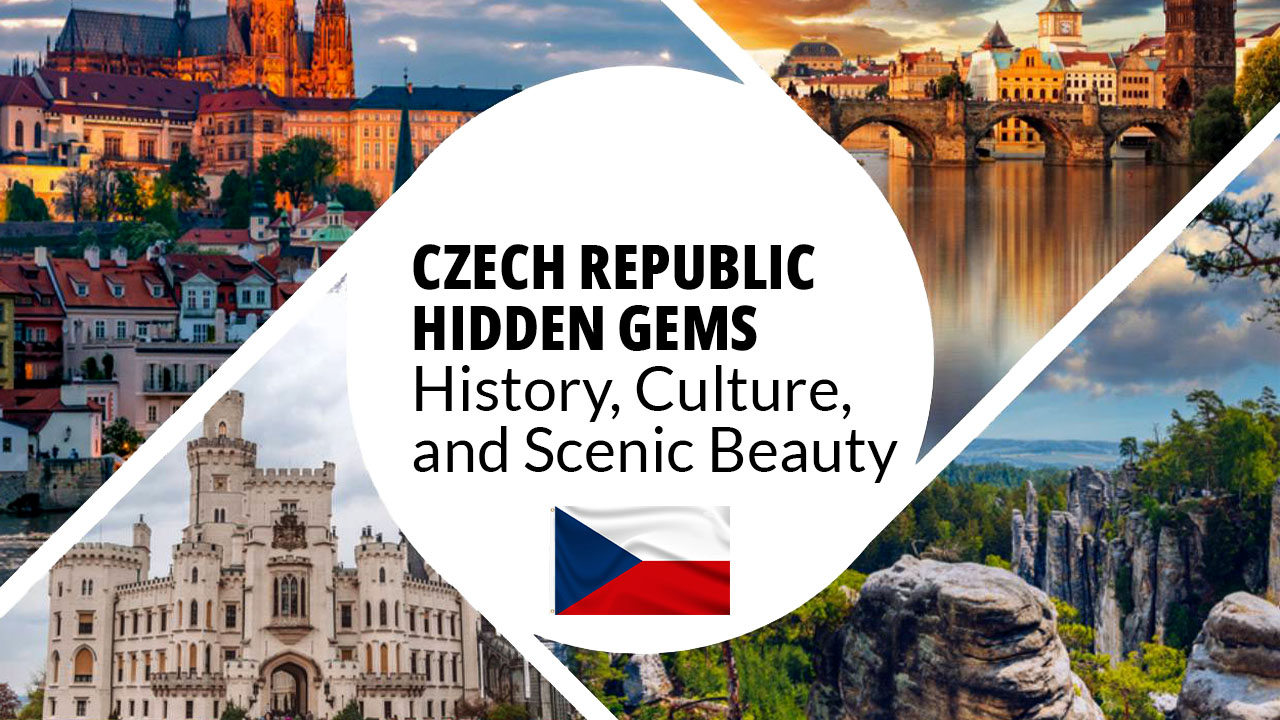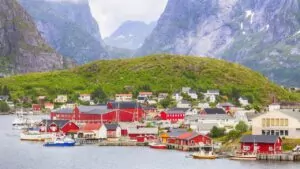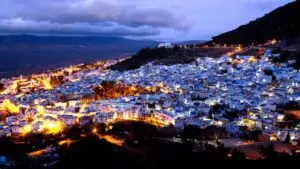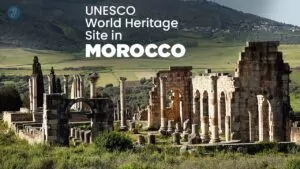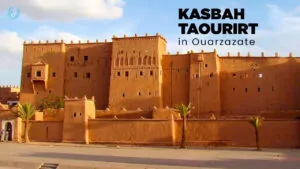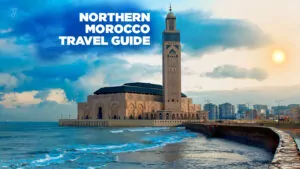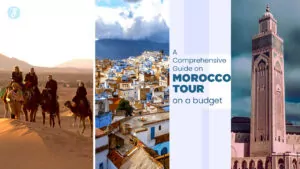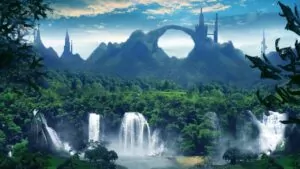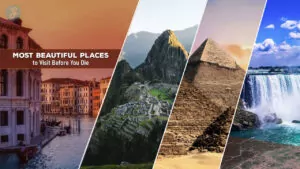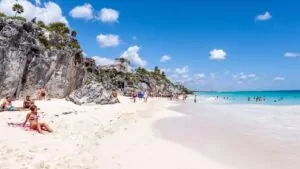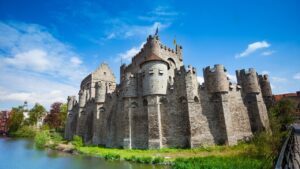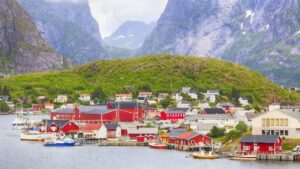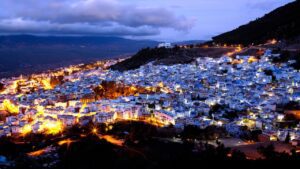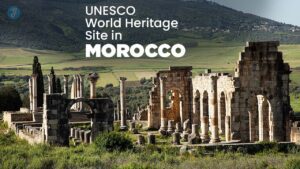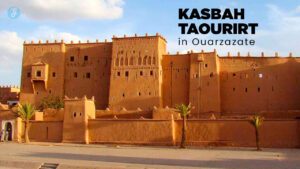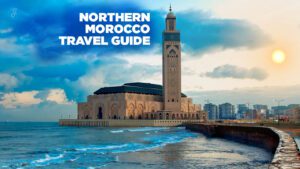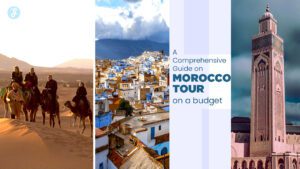The Czech Republic, nestled in the heart of Central Europe, is a land of captivating contrasts. While Prague’s stunning architecture and vibrant nightlife often steal the spotlight, this article delves into the lesser-known treasures that make the Czech Republic a truly remarkable destination.
From ancient castles perched on rocky cliffs to charming medieval towns frozen in time, we’ll explore the Czech Republic hidden gems that showcase the country’s rich history, diverse culture, and breathtaking natural beauty.
Historical Marvels
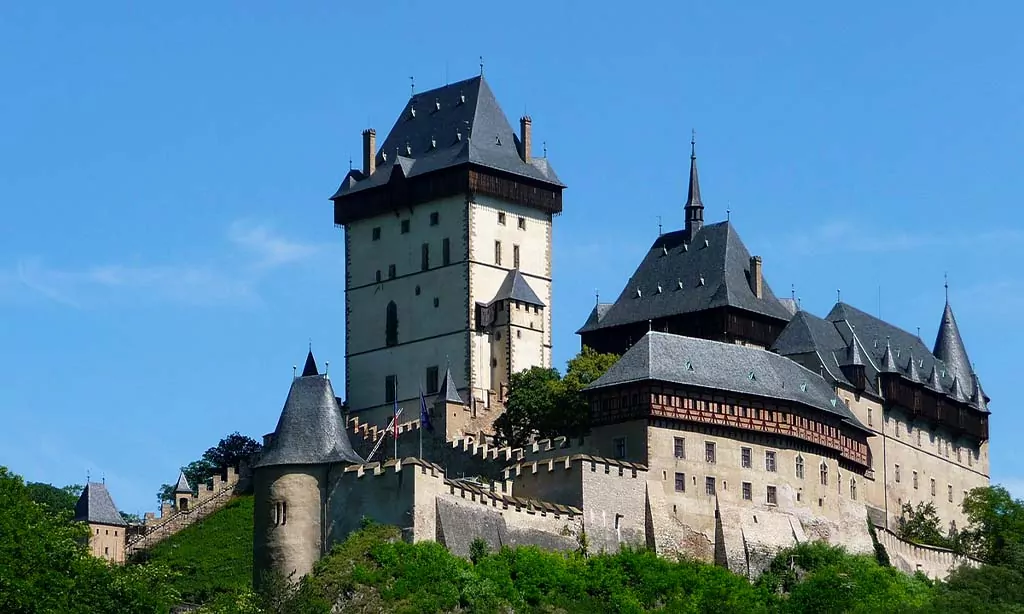
Český Krumlov: A Fairy-tale Town
Tucked away in the southern reaches of Bohemia, Český Krumlov is a living testament to medieval charm. People often refer to this UNESCO World Heritage site as “The Pearl of Bohemia,” and with good reason. The 13th-century castle, perched atop a rocky promontory overlooking the Vltava River, dominates the town’s skyline.
As you wander through the narrow, cobblestone streets, you’ll feel as if you’ve stepped back in time. The town’s well-preserved Gothic, Renaissance, and Baroque architecture creates a magical atmosphere that has captivated visitors for centuries. Don’t miss the castle’s Baroque theater, one of the best preserved in Europe, with its original stage machinery, costumes, and props.
The Cloak Bridge, a unique covered walkway connecting the castle with its gardens, offers stunning views of the town below. For art enthusiasts, the Egon Schiele Art Center showcases works by the famous Austrian painter who lived in Český Krumlov.
Kutná Hora: The City of Silver
Kutná Hora, once rivaling Prague in importance and wealth, owed its fame to the silver mines that fueled its prosperity in the Middle Ages. Today, this UNESCO World Heritage site offers visitors a glimpse into Bohemia’s rich past.
The most iconic landmark is undoubtedly the Gothic St. Barbara’s Church, dedicated to the patron saint of miners. Its unique tent-like roof and intricate flying buttresses make it one of the most spectacular churches in Central Europe. Inside, vibrant frescoes depict the daily lives of medieval miners and the town’s history.
Another must-see attraction is the Sedlec Ossuary, also known as the “Bone Church.” An estimated 40,000 to 70,000 people’s bones, arranged into decorative patterns and sculptures, adorn this small chapel. While macabre, it serves as a powerful reminder of the transience of human life.
The Czech Museum of Silver offers visitors the chance to don miners’s gear and descend into the medieval silver mines, providing a hands-on experience of the town’s mining heritage.
Karlštejn Castle: A Gothic Masterpiece
Perched dramatically on a hilltop about 30 kilometers southwest of Prague, Karlštejn Castle is one of the most impressive Gothic castles in Europe. Charles IV, the Holy Roman Emperor and King of Bohemia, built the castle in the 14th century to protect the imperial regalia and holy relics.
The castle’s architecture is a testament to the period’s military engineering and artistic achievements. As you climb the steep path to the castle, you’ll pass through several gates and courtyards, each designed to make the fortress impregnable.
The highlight of any visit is the Chapel of the Holy Cross, located in the Great Tower. This sacred space once housed the imperial crown jewels and an impressive collection of panel paintings by Master Theodoric. Over 2,000 precious stones and gilded stucco adorn the walls, creating a dazzling effect.
The castle’s interior, with its period furnishings and artwork, offers a glimpse into medieval royal life. The panoramic views of the surrounding Bohemian countryside from the castle’s towers are breathtaking, making the climb well worth the effort.
Now, let’s move on to the next section: Cultural Treasures.
Cultural Treasures
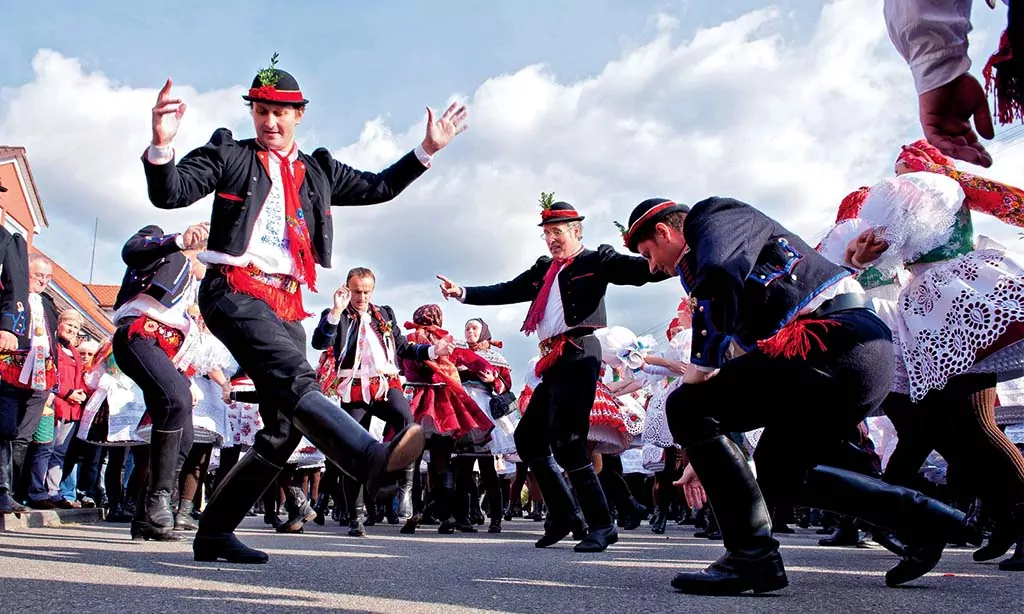
Moravian Wine Region: A Taste of Tradition
While the Czech Republic is famous for its beer, the Moravian wine region in the country’s southeast offers a delightful change of pace. This picturesque area, with its rolling hills and charming villages, produces some of Central Europe’s finest wines.
The town of Mikulov serves as an excellent base for exploring the region. Pastel-colored Renaissance houses surround the imposing Mikulov Chateau, dominating its historic square. The chateau houses a wine museum where you can learn about the area’s 2,000-year-old winemaking tradition.
For a unique experience, visit the wine cellars of Valtice and Lednice. These UNESCO-listed chateaux were once the seat of the powerful Liechtenstein family. Today, they host wine tastings and cultural events in their extensive cellars.
Cycling enthusiasts will love the Moravian Wine Trails, a network of bike paths that wind through vineyards and picturesque villages. Stop at small family-owned wineries to taste local specialties like Pálava, an aromatic white wine, or Frankovka, a full-bodied red.
Olomouc: The Hidden Capital of Culture
Often overlooked by tourists, Olomouc is a vibrant university town with a rich history and youthful energy. Once the capital of Moravia, this city boasts the second-largest historical center in the Czech Republic after Prague.
The Holy Trinity Column, a Baroque masterpiece and UNESCO World Heritage Site, stands in the center of Olomouc’s main square. The early 18th century saw the construction of this 35-meter-high monument, adorned with religious sculptures, as a celebration of Catholic faith and a token of gratitude for the end of a plague epidemic.
Art lovers shouldn’t miss the Archdiocesan Museum, housed in the former Přemyslid Palace. It showcases a thousand years of artistic development in Moravia, including works by renowned artists like Lucas Cranach the Elder.
Olomouc is also famous for its astronomical clock, a unique socialist-realist version rebuilt after World War II. Instead of religious figures, it features workers, farmers, and other symbols of the proletariat.
Don’t leave without trying Olomoucké tvarůžky, a pungent cheese that has been produced in the region for centuries. Its strong aroma might be challenging for some, but its taste is unforgettable.
Bohemian Paradise: Where Nature Meets History
Český ráj, or Bohemian Paradise, is a protected landscape area that offers a perfect blend of natural beauty and historical landmarks. This region, located northeast of Prague, is characterized by its unique rock formations, deep forests, and medieval castles.
The area’s most distinguishing features are its “rock” towns—labyrinths of sandstone towers, some reaching heights of 60 meters. Hrubá Skála and Prachovské skály are two of the most popular areas for hiking and rock climbing.
Scattered throughout the landscape are numerous castles and chateaux. Trosky Castle, with its two distinctive towers perched atop volcanic plugs, is the symbol of the region. Kost Castle, one of the best-preserved Gothic castles in Bohemia, offers a glimpse into medieval life with its authentic interiors and armor exhibitions.
For a taste of rural Czech life, visit the Dlaskův statek in Dolánky, an 18th-century farmstead that now serves as an open-air museum showcasing traditional architecture and customs of the region.
Now, let’s continue with the next section: Natural Wonders.
Natural Wonders
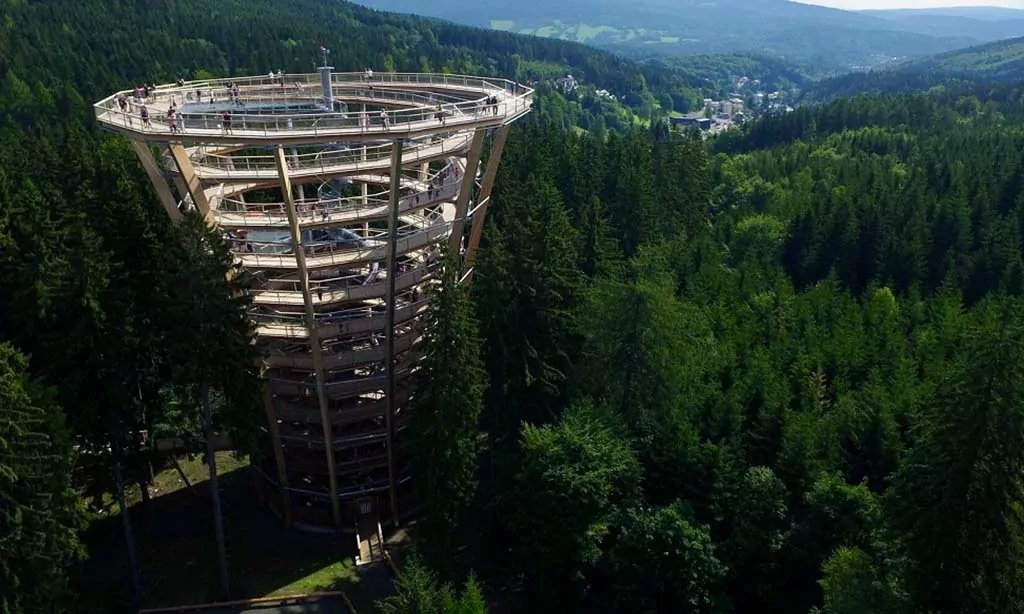
Bohemian Switzerland National Park: A Hiker’s Paradise
Despite its name, Bohemian Switzerland (České Švýcarsko) is located entirely within the Czech Republic, along the German border. This national park is a haven for nature lovers and hikers, offering breathtaking landscapes of sandstone cliffs, deep gorges, and lush forests.
The park’s most iconic landmark is the Pravčická brána, the largest natural sandstone arch in Europe. Standing 16 meters high and spanning 26 meters, this majestic formation has inspired artists and writers for centuries. A short hike leads to the arch, offering spectacular views of the surrounding countryside.
Another must-see attraction is the Kamenice Gorge. Take a boat ride through the narrow canyon, where your boatman will regale you with local legends as you glide past moss-covered rocks and small waterfalls.
For those seeking a challenge, the Jetřichovice Rocks offer a network of hiking trails with stunning viewpoints. The Mariina vyhlídka (Mary’s Viewpoint) provides a panoramic vista of the park’s sandstone formations and forested valleys.
Punkva Caves and Macocha Abyss: Underground Marvels
The Moravian Karst region is home to over 1,000 caves, but none are as famous or spectacular as the Punkva Caves. This underground system offers visitors a unique experience combining a walking tour and a boat ride on the subterranean Punkva River.
The highlight of the tour is the boat ride through the cave’s flooded passageways, where stalactites hang just inches above your head. The journey culminates at the bottom of the Macocha Abyss, a 138-meter-deep gorge that’s the deepest of its kind in Central Europe.
For a different perspective, take the cable car to the upper bridge of the Macocha Abyss. From here, you can peer into the depths of the chasm and admire the lush vegetation clinging to its steep walls.
Nearby, the Kateřinská Cave is famous for its massive stalagmite formations, including the “Witch,” which stands at an impressive 8 meters tall.
Šumava National Park: The Green Roof of Europe
Straddling the border between the Czech Republic, Germany, and Austria, Šumava National Park is often called the “Green Roof of Europe.” This vast wilderness area is home to ancient forests, crystal-clear glacial lakes and diverse wildlife.
One of the park’s most beautiful spots is Černé jezero (Black Lake), the largest natural lake in the Czech Republic. Surrounded by pine forests and rocky slopes, its dark waters create a mirror-like surface that perfectly reflects the surrounding landscape.
For a unique experience, visit the Chalupská slať, one of the largest peat bogs in Central Europe. A wooden boardwalk allows visitors to explore this fragile ecosystem without disturbing it, offering close-up views of carnivorous plants and rare bird species.
Parts of the park still display remnants of the Iron Curtain, which history buffs will appreciate. The abandoned watchtowers and cleared strips of land serve as a reminder of the region’s recent past.
Now, let’s move on to the next section: Off-the-Beaten-Path Experiences.
Off-the-Beaten-Path Experiences
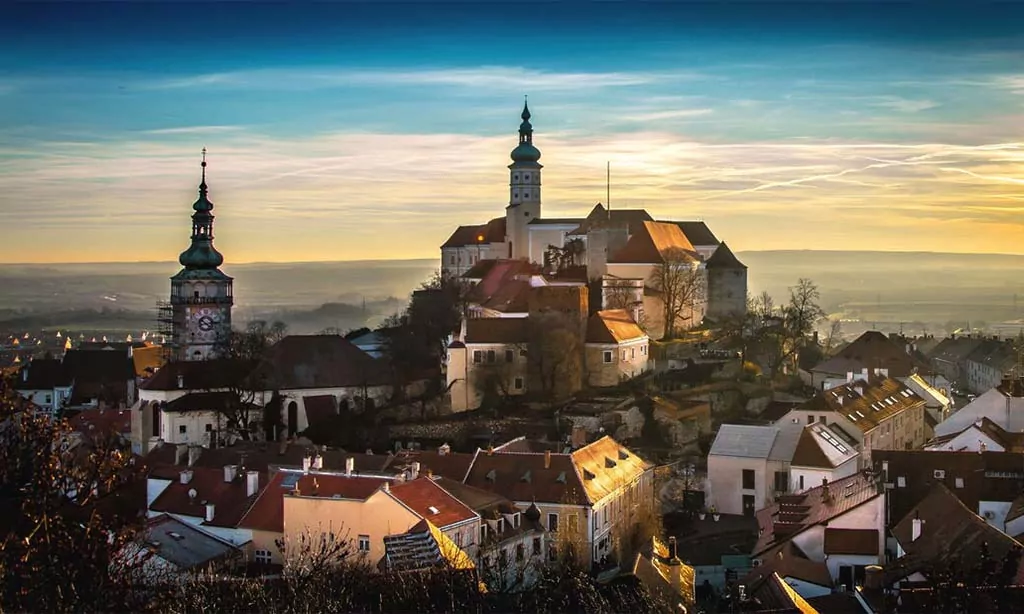
Telč: A Renaissance Jewel
Hidden away in the Vysočina region, Telč is a small town that packs a big punch when it comes to architectural beauty. People often describe its main square, a UNESCO World Heritage Site, as one of the most beautiful in Europe.
Colorful Renaissance and Baroque houses line the square, their facades adorned with intricate sgraffito decorations. Each house is unique, yet they form a harmonious whole that seems almost too perfect to be real.
At one end of the square stands Telč Castle, a blend of Gothic and Renaissance styles. The castle’s interiors are a treasure trove of period furnishings, ornate stucco ceilings, and beautifully preserved Renaissance paintings.
For a bird’s-eye view of the town, climb the tower of the Church of the Holy Spirit. From here, you can admire the town’s layout and the picturesque ponds that surround it, which are part of an ingenious medieval water management system.
Loket: The “Elbow” of Bohemia
Loket, which translates to “elbow” in Czech, is a charming medieval town perched on a rocky promontory that the Ohe River surrounds on three sides.
The town’s 13th-century castle dominates, offering panoramic views of the surrounding landscape. Inside, you’ll find exhibits on the castle’s history, including its time as a notorious prison. Don’t miss the porcelain museum, showcasing the region’s famous product.
Loket’s compact old town is perfect for wandering. Well-preserved Gothic and Baroque houses line its narrow streets, and the main square features a plague column typical of many Czech towns.
Film buffs might recognize Loket as a filming location for the James Bond movie “Casino Royale.” The town’s picturesque setting has made it a popular choice for filmmakers seeking authentic medieval backdrops.
Mikulov: Wine and History in South Moravia
Nestled in the heart of the Moravian wine region, Mikulov is a town where history and viticulture intersect. Its skyline is dominated by the massive Mikulov Chateau, which houses a fascinating museum dedicated to the town’s history and the region’s winemaking tradition.
The town’s Jewish heritage is evident in the well-preserved Jewish quarter, home to one of the largest Jewish cemeteries in Central Europe. The cemetery, with its weathered tombstones dating back to the 15th century, is a poignant reminder of the town’s once-thriving Jewish community.
A visit to the Czech Republic Wine Salon in the chateau’s cellars is a must for wine enthusiasts. Here, you can taste a curated selection of the country’s best wines.
Nature lovers should climb Svatý kopeček (Holy Hill), marked by a distinctive chapel visible from miles around. The hill offers not only panoramic views of the town and surrounding vineyards but also a chance to see rare plant species that thrive in its limestone soil.
Now, let’s conclude with some practical tips for exploring these Czech hidden gems.
Practical Tips for Exploring Czech Hidden Gems
The best times to visit
The Czech Republic is a year-round destination, but each season offers a unique experience:
- Spring (March to May): Mild weather and blooming landscapes make this an ideal time for outdoor activities. However, be prepared for occasional rain showers.
- Summer (June to August): This is the peak tourist season, with warm weather perfect for exploring. However, popular destinations can get crowded, and prices are at their highest.
- Fall (September to November): The autumn colors in places like Bohemian Paradise and Šumava National Park are spectacular. In Moravia, this is also the time for wine harvests.
- Winter (December to February): While cold, this season offers magical Christmas markets and opportunities for winter sports in places like Šumava.
Transportation Options
- Train: The Czech Republic has an extensive and efficient rail network. For longer journeys, consider using the comfortable and swift InterCity (IC) or EuroCity (EC) trains.
- Bus: For destinations not easily accessible by train, transit buses are a good option. Companies like RegioJet and Flixbus offer comfortable and affordable services.
- Car Rental: Renting a car gives you the most flexibility, especially for exploring rural areas. However, be aware that some mountain roads can be challenging, especially in winter.
- Cycling: The country has an extensive network of bicycle paths, particularly in South Moravia and Bohemian Paradise.
Accommodation Recommendations
- Pensions: These family-run guesthouses offer a more personal experience than hotels and are often more affordable.
- Castle Hotels: For a unique experience, consider staying in one of the many castles or chateaux that have been converted into hotels.
- Agrotourism: Farm stays are growing in popularity, providing an opportunity for
- Agrotourism: Farm stays are becoming increasingly popular, offering a chance to experience rural Czech life firsthand. These are particularly common in wine regions.
- Mountain Chalets: In areas like Šumava National Park, renting a chalet can be an excellent option for those looking to immerse themselves in nature.
- Hostels: For budget travelers, many Czech cities offer high-quality hostels with private rooms as well as dormitories.
When booking accommodation, especially in smaller towns or rural areas, it’s advisable to book in advance during peak season (July-August) and around major holidays.
Conclusion
The Czech Republic is a country that rewards the curious traveler. While Prague’s magnificence is undeniable, the true essence of Czech culture, history, and natural beauty often lies in its lesser-known corners. From the fairy-tale town of Český Krumlov to the wild landscapes of Bohemian Switzerland, from the wine cellars of Moravia to the Renaissance splendor of Telč, these hidden gems offer authentic experiences that go beyond the typical tourist trail.
Remember to travel responsibly, respecting local customs and the environment. Many of these locations are protected areas or small communities, so sustainable tourism practices are crucial to preserving their charm for future generations.
So pack your sense of adventure, open your mind to new experiences, and prepare to fall in love with the hidden gems of the Czech Republic. Your tour of this magical land will be unforgettable and enriching.

